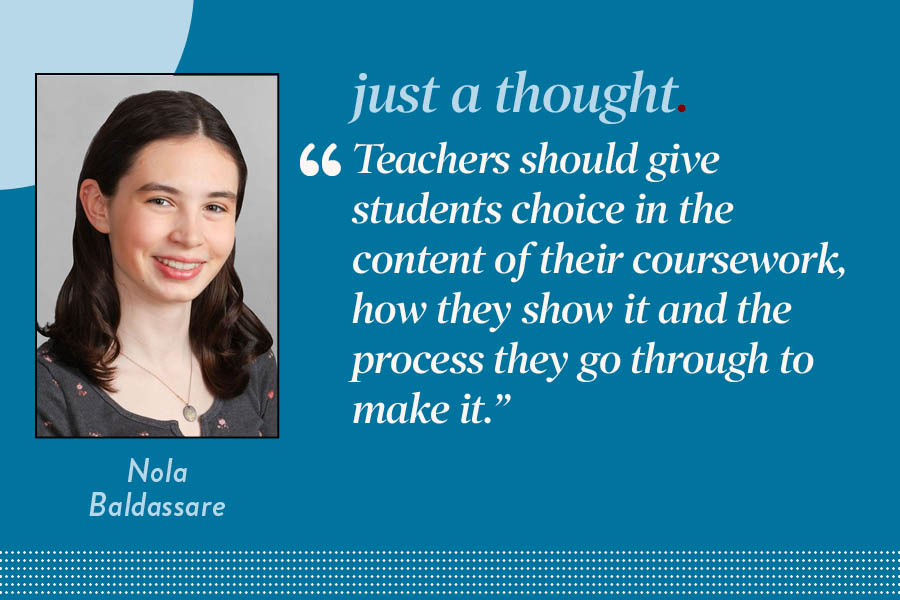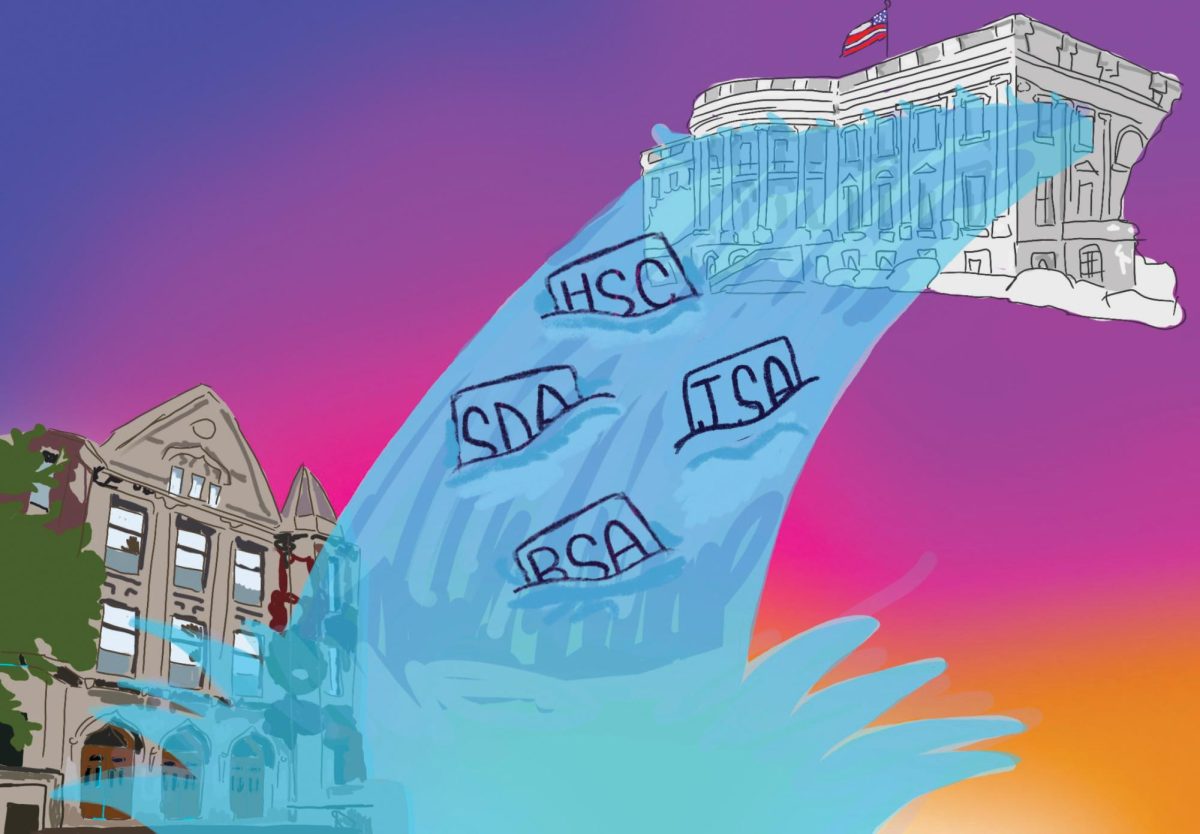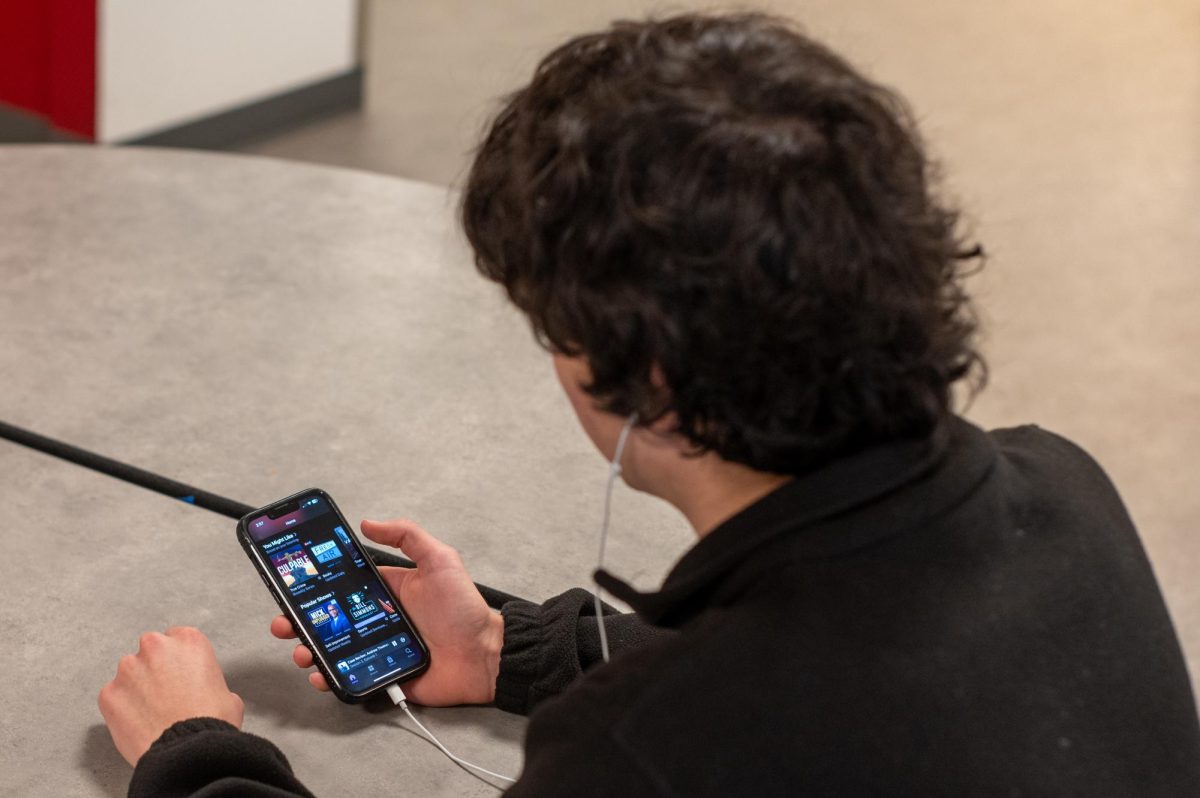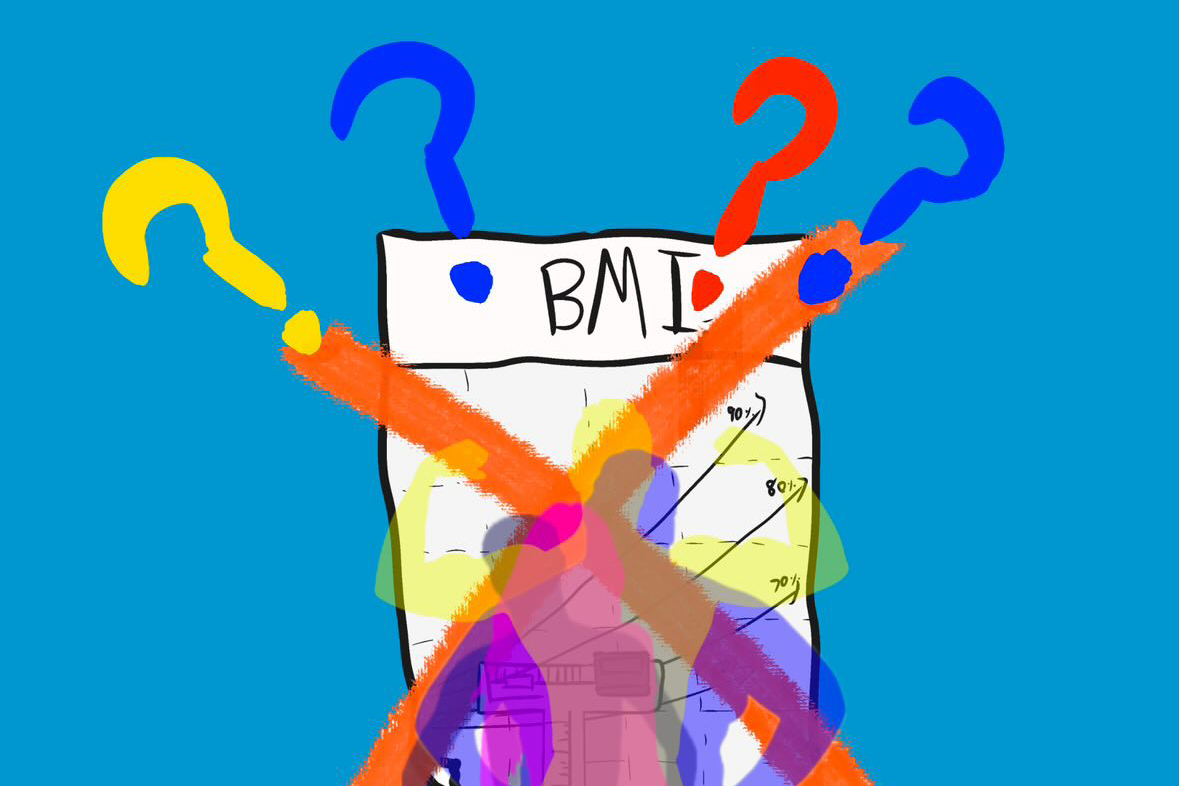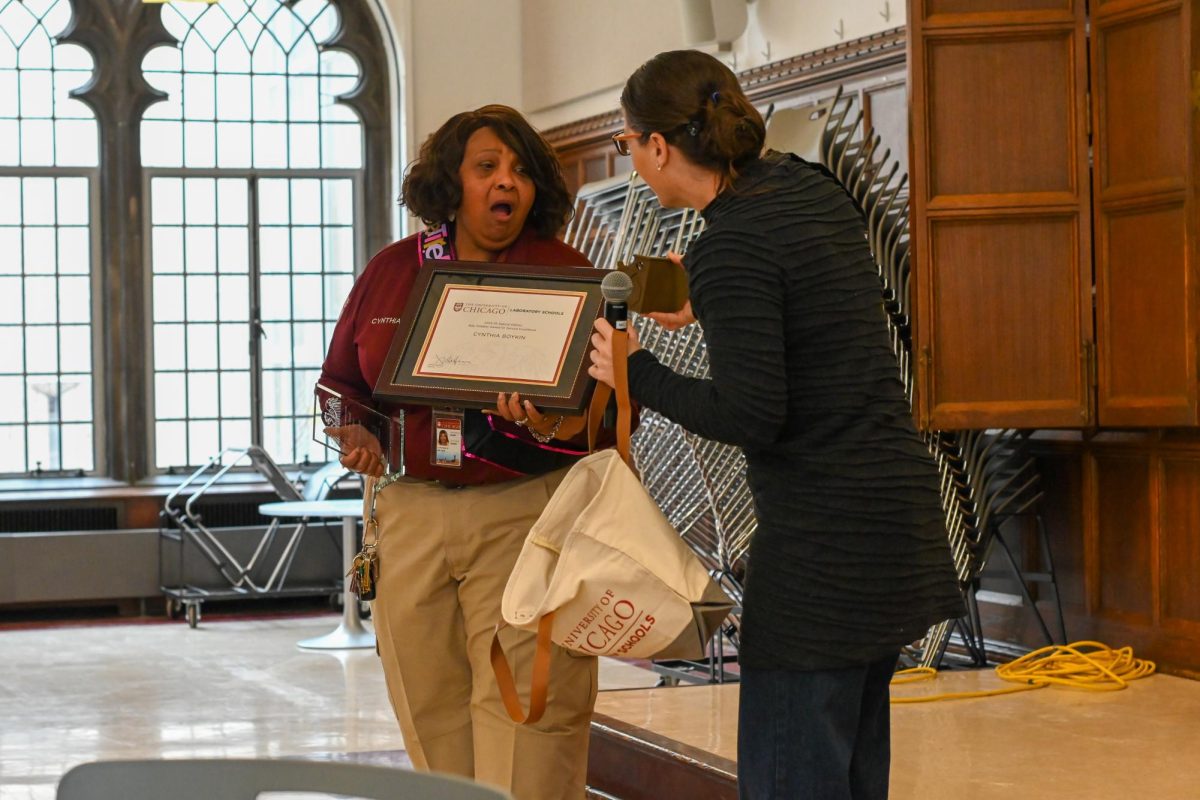Corvus Gallery showcases politically emblematic, self-expressive art
Mr. Onli stands in front of his collection in the Corvus Gallery in Gordon Parks Arts Hall.
November 4, 2021
Watercolor, oil paint, comic books: all ways in which Turtel Onli chooses to express himself in his exhibit “Rhythmism.” With vibrant paintings lining the walls, the exhibit stands out in the Corvus Gallery located in Gordon Parks Arts Hall and showing through Dec. 10.
Ever since he was a child, Mr. Onli has had a passion for art in his unique genre called “Rhythmism,” a future primitive style that brings attention to the way Black artists are treated.
“Black art or art that Black people do is typically suffering, misery or political statements, and even that isn’t considered a category,” Mr. Onli said. “Rhythmism is a way of doing, being and making the art.”
For Mr. Onli, art is the way in which he portrays himself, expresses his ideas, and makes political statements. The pieces of art displayed in the Corvus Gallery range from pencil drawings to detailed watercolor paintings, each with a story behind them.
“Not only do I express myself, but I also communicate,” Mr. Onli said, “For some I do narrative work which might be about a story, politics or issues that may not be my own but those ideas flow through it. So self expression can sometimes be really esoteric.”
Mr. Onli has incorporated art into his professional life through working as a major marketing illustrator and art therapist before becoming a public school teacher in order to have more time to work on his company, “Onli Studios.” Since then, his work has been featured in different places such as the Museum of Contemporary Art.
Painting is not the only way Mr. Onli expresses himself. He also creates comic books with positive messages, which he believes impact society on a broader scale than individual pieces of art. Many of the pieces featured in the “Rhythmism” exhibit include characters from his comic books.
“I looked at expanding the comic book industry because when I started the black character was usually a sidekick a lot of times done in a humiliating and insulting way, if there were any at all,” Mr. Onli said.
In these books, he also makes a point to diverge from the sexist stereotypes often present in graphic novels through only hiring female artists and illustrators to create them.
Inspiration for Mr. Onli comes from all over, and often he doesn’t need inspiration to paint.
“I’m one of those people that don’t necessarily need to be inspired,” Mr. Onli said, “because that thing in me that is an artist is my primary language. It’s always on.”


















